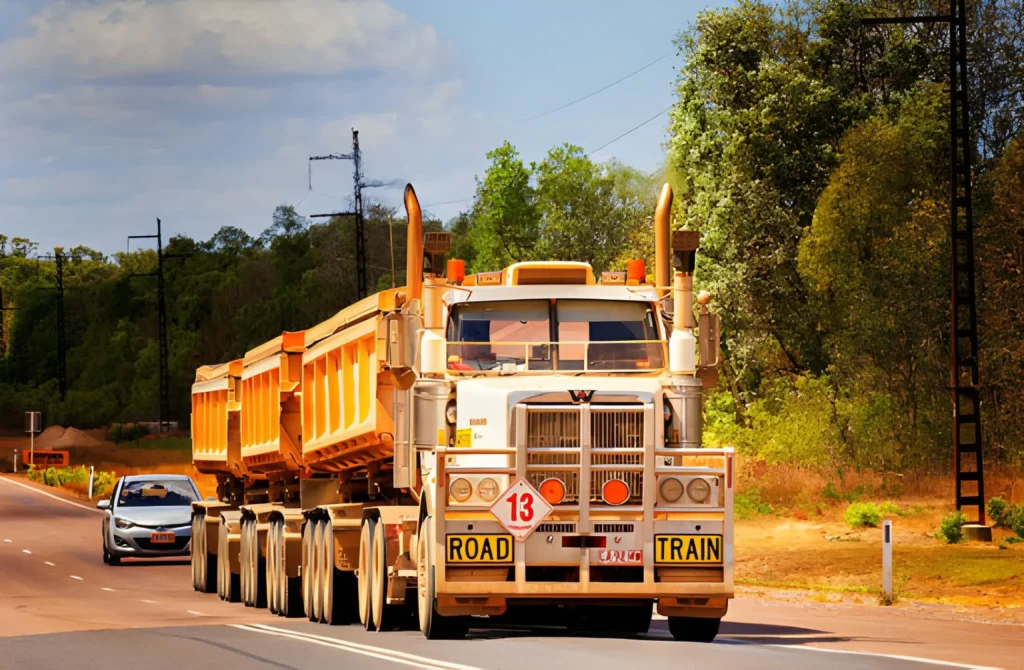If you’ve ever driven through the Australian outback or seen those massive trucks hauling multiple trailers across endless highways, you’ve witnessed the sheer scale of what a heavy-duty road train truck can do. These aren’t your regular trucks. We’re talking about machines that pull two, three, sometimes even four trailers at once, covering distances that would make most vehicles cry for mercy. The engineering behind these beasts is something else entirely, combining raw power with surprisingly smart design choices that keep them running in some of the harshest conditions on Earth.
What Actually Makes a Road Train Different
The thing about road trains is they’re built for a very specific job that most trucks simply can’t handle. Your standard semi-trailer setup tops out at one trailer, maybe stretching to about 19 meters in total length. A road train? Try doubling or tripling that. Some configurations in Australia legally run up to 53.5 meters long, which is roughly half a football field moving down the highway at 90 kilometers per hour.
The power requirements alone are wild. Most road train prime movers pack engines in the 550 to 600 horsepower range, though some operations push that to 700hp when they’re dealing with particularly heavy loads or hilly terrain. That’s not just about speed though – it’s about maintaining momentum with 200 tonnes behind you. Losing speed on an incline when you’re pulling that kind of weight means you’re burning through fuel trying to get it back.
Suspension and Braking Systems That Actually Work
Here’s something that surprised me when I first learned about it: the suspension on these trucks isn’t just about comfort. It’s a critical safety component that distributes weight across multiple axles so you don’t tear up the road surface or lose control. Air suspension systems are pretty much standard now, letting drivers adjust ride height and stiffness depending on load conditions.
The braking setup is equally important. You can’t just slam on traditional brakes when you’ve got multiple trailers following behind. Modern road trains use a combination of air brakes, engine brakes, and exhaust brakes that work together. The engine brake (sometimes called a Jake brake) uses back pressure to slow the engine itself, which means you’re not relying purely on friction brakes that can overheat and fail.
Fuel Efficiency in the Most Unlikely Place
You’d think something this big would just guzzle fuel without mercy, but operators have gotten surprisingly good at efficiency. Modern road trains average around 1.8 to 2.2 kilometers per liter when fully loaded, which doesn’t sound impressive until you remember they’re moving the equivalent of six or seven regular truck loads in one trip.
Aerodynamics play a bigger role than you’d expect. Those fairings and side skirts you see aren’t just for looks – they reduce drag between the cab and trailer, and between trailers themselves. Some operators report fuel savings of 5-8% just from proper aerodynamic modifications.
The Real-World Challenges Nobody Talks About
Driving a road train isn’t like driving a big truck. It’s a completely different skill set. The off-tracking (how much the rear trailers cut corners) can be several meters, which means you need to plan turns way in advance. Emergency maneuvers? Forget about it. At highway speed, these things need over 300 meters to come to a complete stop under ideal conditions.
Weather conditions add another layer of complexity. In Australia’s Top End during wet season, or in the red center during dust storms, visibility drops and road conditions change fast. The weight of a fully loaded road train gives it momentum that fights against every attempt to slow or steer it, which is why driver experience matters so much in this industry.
Road trains represent some of the most practical heavy-duty engineering you’ll find anywhere, built specifically for the unique challenges of moving massive amounts of cargo across vast, empty distances where efficiency and reliability aren’t luxuries – they’re absolute requirements.
Also Read-Staying Ahead in Dental Practice: Continuous Education, Tech Trends, and Patient Care







